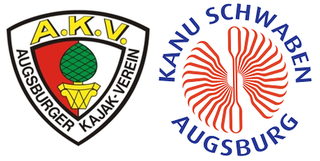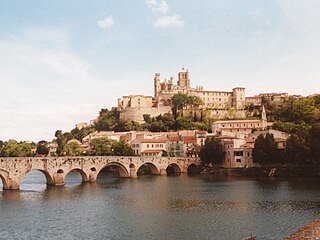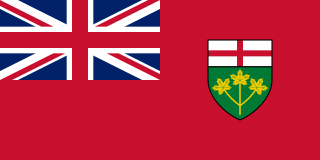The 2011 Canoe Slalom World Cup was a series of four races in 5 canoeing and kayaking categories organized by the International Canoe Federation (ICF). It was the 24th edition.
The 2009 Canoe Slalom World Cup was a series of five races in 4 canoeing and kayaking categories organized by the International Canoe Federation (ICF). It was the 22nd edition. The series consisted of 2 continental championships which were open to all countries and 3 world cup races. The athletes gained points for their results in the three world cup races plus their best result from any of the two continental championships. The women's single canoe appeared for the first time at the world cups and was an exhibition event.
The 2008 Canoe Slalom World Cup was a series of seven races in 4 canoeing and kayaking categories organized by the International Canoe Federation (ICF). It was the 21st edition. The series consisted of 4 continental championships which were open to all countries and 3 world cup races. The athletes gained points for their results in the three world cup races plus their best result from any of the four continental championships.
The 2007 Canoe Slalom World Cup was a series of four races in 4 canoeing and kayaking categories organized by the International Canoe Federation (ICF). It was the 20th edition. The series consisted of Pan American continental championships which were open to all countries and 3 world cup races.
The 2006 Canoe Slalom World Cup was a series of eight races in 4 canoeing and kayaking categories organized by the International Canoe Federation (ICF). It was the 19th edition. The series consisted of 4 continental championships, 3 world cup races and the world championships.
The 2005 Canoe Slalom World Cup was a series of eight races in 4 canoeing and kayaking categories organized by the International Canoe Federation (ICF). It was the 18th edition. The series consisted of 4 continental championships, 3 world cup races and the world championships.
The 2004 Canoe Slalom World Cup was a series of six races in 4 canoeing and kayaking categories organized by the International Canoe Federation (ICF). It was the 17th edition. The series consisted of 5 regular world cup races and the world cup final.
The 2003 Canoe Slalom World Cup was a series of five races in 4 canoeing and kayaking categories organized by the International Canoe Federation (ICF). It was the 16th edition. The series consisted of 4 regular world cup races and the world cup final.
The 2002 Canoe Slalom World Cup was a series of five races in 4 canoeing and kayaking categories organized by the International Canoe Federation (ICF). It was the 15th edition. The series consisted of 4 regular world cup races and the world cup final.
The 2001 Canoe Slalom World Cup was a series of six races in 4 canoeing and kayaking categories organized by the International Canoe Federation (ICF). It was the 14th edition. The series consisted of 5 regular world cup races and the world cup final.
The 2000 Canoe Slalom World Cup was a series of six races in 4 canoeing and kayaking categories organized by the International Canoe Federation (ICF). It was the 13th edition. The series consisted of 5 regular world cup races and the world cup final.
The 1999 Canoe Slalom World Cup was a series of five races in 4 canoeing and kayaking categories organized by the International Canoe Federation (ICF). It was the 12th edition. The series consisted of 4 regular world cup races and the world cup final.
The 1998 Canoe Slalom World Cup was a series of five races in 4 canoeing and kayaking categories organized by the International Canoe Federation (ICF). It was the 11th edition. The series consisted of 4 regular world cup races and the world cup final.
The 1997 Canoe Slalom World Cup was a series of five races in 4 canoeing and kayaking categories organized by the International Canoe Federation (ICF). It was the 10th edition. The series consisted of 4 regular world cup races and the world cup final.
The 1996 Canoe Slalom World Cup was a series of five races in 4 canoeing and kayaking categories organized by the International Canoe Federation (ICF). It was the 9th edition. The series consisted of 4 regular world cup races and the world cup final.
The 1995 Canoe Slalom World Cup was a series of five races in 4 canoeing and kayaking categories organized by the International Canoe Federation (ICF). It was the 8th edition. The series consisted of 4 regular world cup races and the world cup final.
The 1994 Canoe Slalom World Cup was a series of five races in 4 canoeing and kayaking categories organized by the International Canoe Federation (ICF). It was the 7th edition. The series consisted of 4 regular world cup races and the world cup final.
The 1993 Canoe Slalom World Cup was a series of five races in 4 canoeing and kayaking categories organized by the International Canoe Federation (ICF). It was the 6th edition. The series consisted of 4 regular world cup races and the world cup final.
The 1992 Canoe Slalom World Cup was a series of five races in 4 canoeing and kayaking categories organized by the International Canoe Federation (ICF). It was the 5th edition. The series consisted of 4 regular world cup races and the world cup final.
The 1990 Canoe Slalom World Cup was a series of five races in 4 canoeing and kayaking categories organized by the International Canoe Federation (ICF). It was the 3rd edition. The series consisted of 4 regular world cup races and the world cup final.





